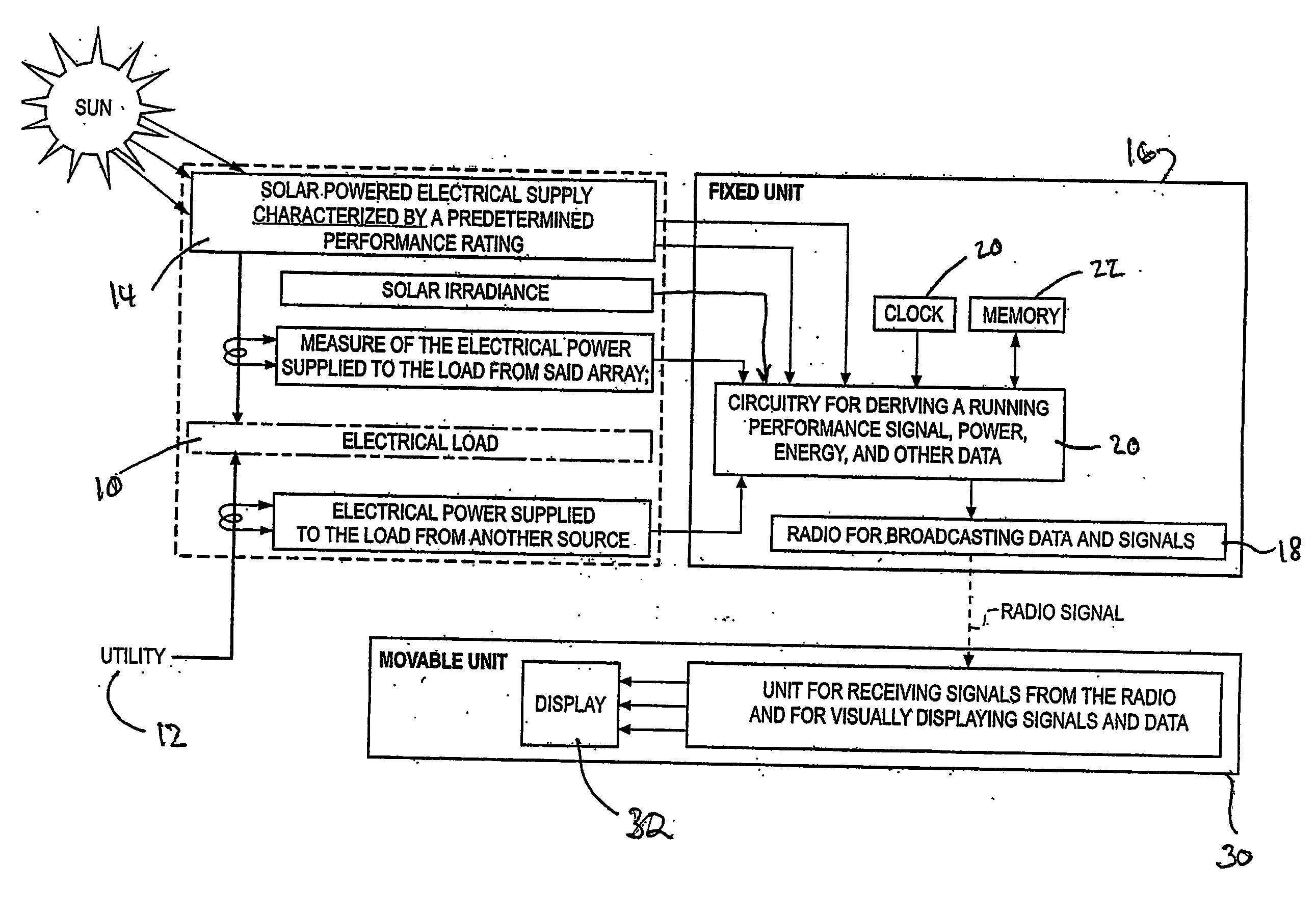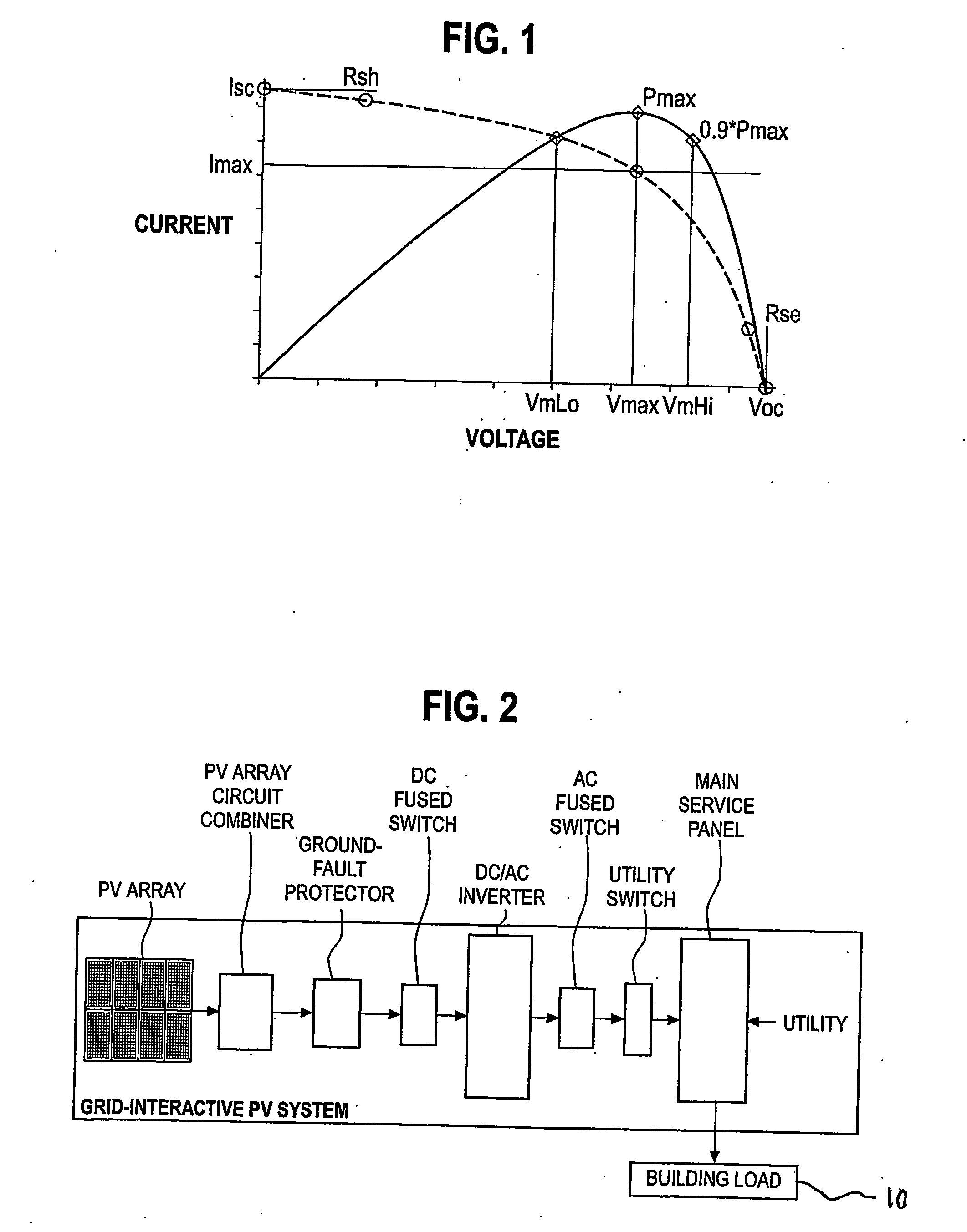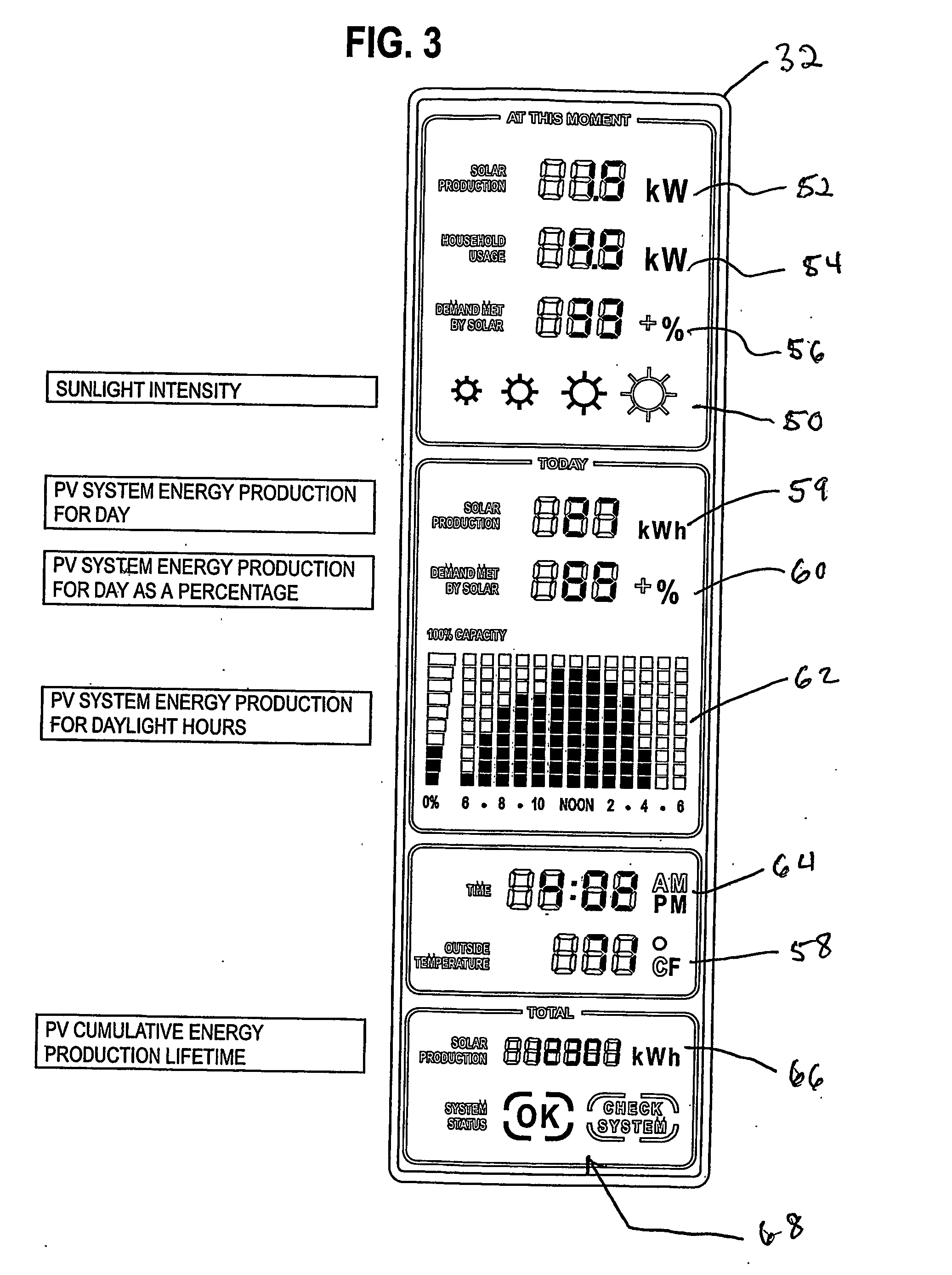Performance monitor for a photovoltaic supply
- Summary
- Abstract
- Description
- Claims
- Application Information
AI Technical Summary
Benefits of technology
Problems solved by technology
Method used
Image
Examples
Embodiment Construction
[0032] While this invention is susceptible of embodiment in many different forms, there is shown in the drawings, and will herein be described in detail, several specific embodiments of the invention. It should be understood, however, that the present disclosure is to be considered an exemplification of the principles of the invention and is not intended to limit the invention to any specific embodiment so described.
[0033] Before describing the invention in detail, the environment of the invention will be explained.
Typical System Components
[0034] A typical solar electrical power system (see FIG. 2) comprises: a PV Array, Balance of System Equipment, a DC to AC Inverter, and other components.
[0035] PV Array: Common PV modules are 5 to 25 square feet in size and weigh about 3 to 4 lbs. / ft2. Often sets of four or more smaller modules are framed or attached together by struts in what is called a panel. This panel is typically around 20 to 35 square feet in area for ease of handling ...
PUM
 Login to View More
Login to View More Abstract
Description
Claims
Application Information
 Login to View More
Login to View More - R&D
- Intellectual Property
- Life Sciences
- Materials
- Tech Scout
- Unparalleled Data Quality
- Higher Quality Content
- 60% Fewer Hallucinations
Browse by: Latest US Patents, China's latest patents, Technical Efficacy Thesaurus, Application Domain, Technology Topic, Popular Technical Reports.
© 2025 PatSnap. All rights reserved.Legal|Privacy policy|Modern Slavery Act Transparency Statement|Sitemap|About US| Contact US: help@patsnap.com



